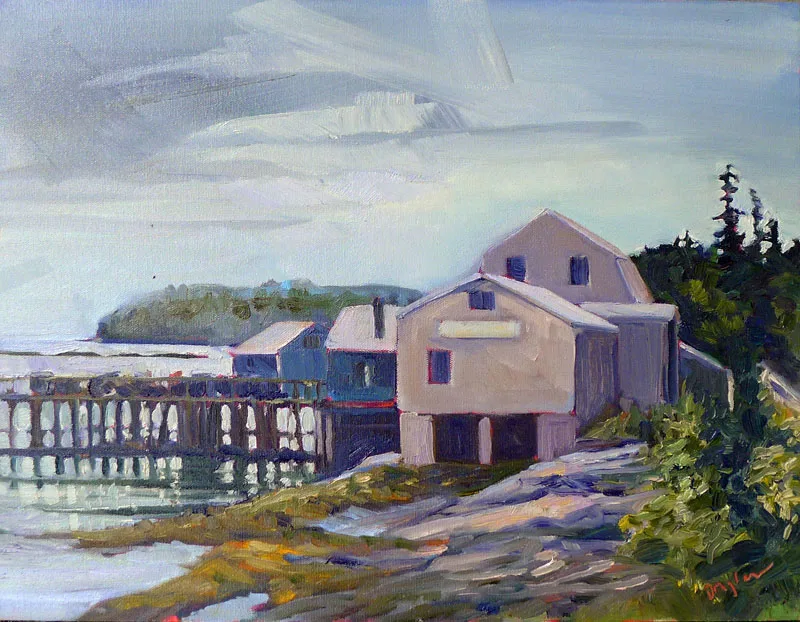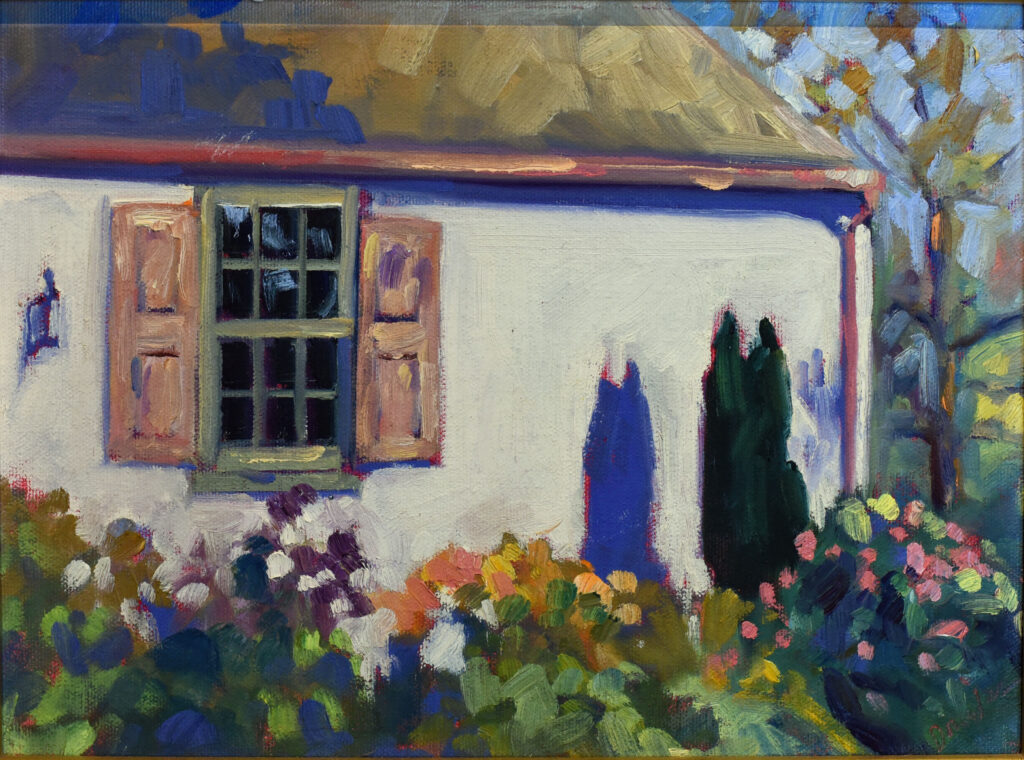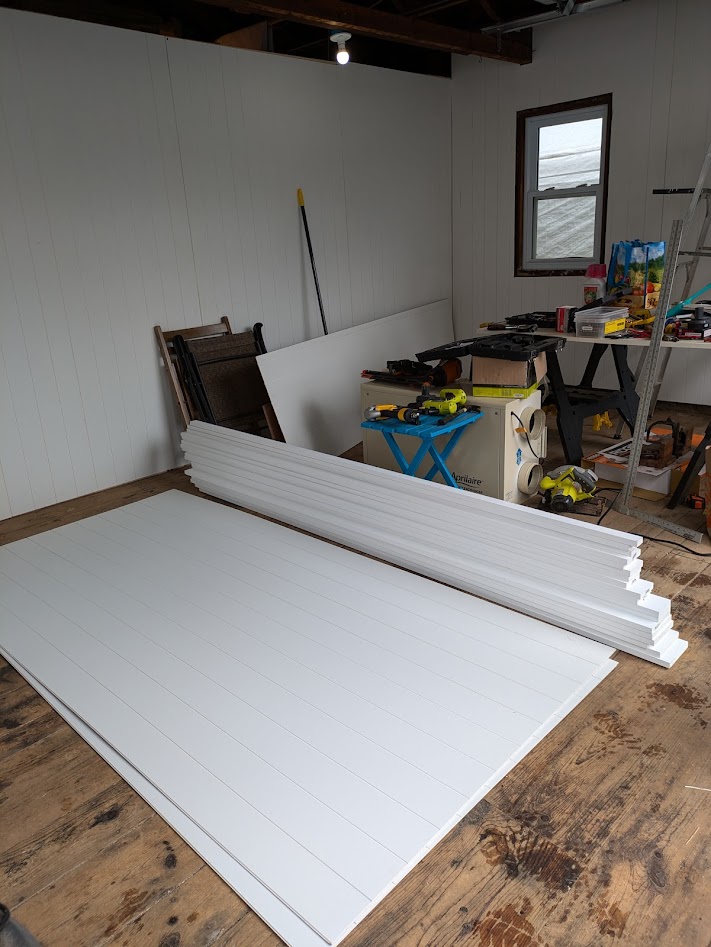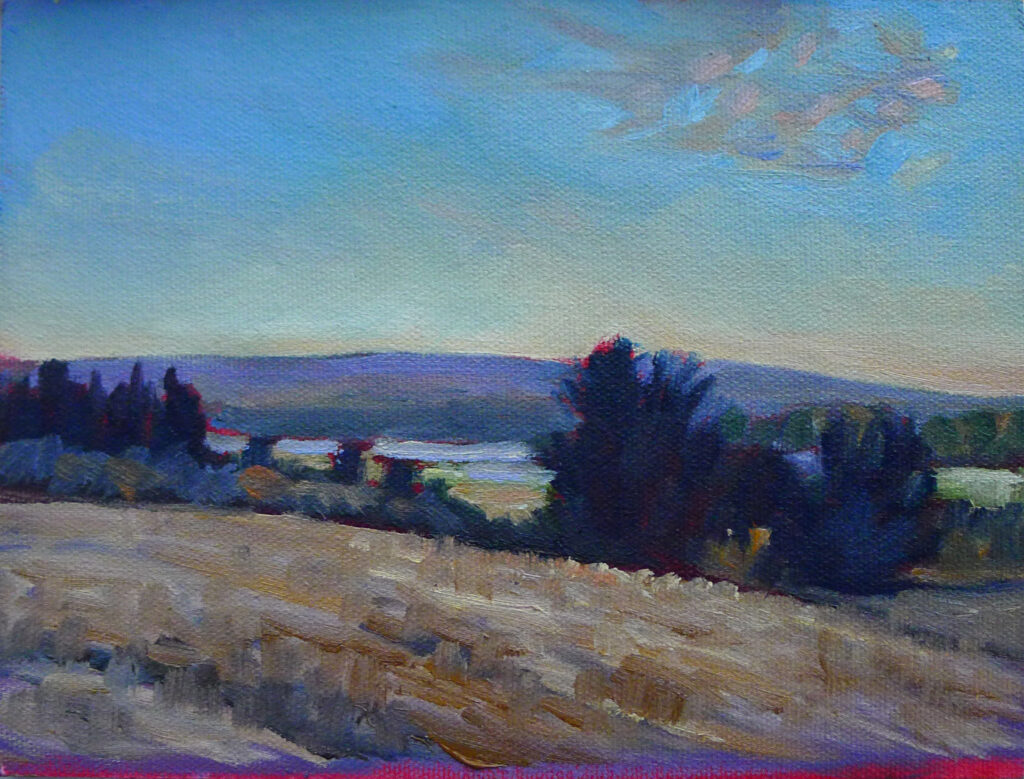
I like living in an old house. It’s small and worn, but it’s also charming and durable. It’s only when I want to fix or replace something that it annoys. Nothing is straight. Some walls and ceilings are plaster-and-lath, some are drywall, and some are board. Channels have been cannibalized for water or power lines, so you’re never sure what you’ll find inside a wall. For most of our remit here, we’ve been able to hire professionals to experience those “oh, no,” moments. But not for this project.
This house was a classic New England farmhouse: a barn was attached to the main structure through a series of sheds. In the 1940s, the barn burned and took out the sheds and the kitchen ell. Charring can still be seen in the main section’s rafters.

The owners replaced the barn with a detached garage on the same foundation. Other than a new service panel and new doors, it stands as built 80 years ago. It’s no straighter or less quirky than the house; it’s large and has a plank floor. My friend Ken DeWaard suggested I use part of it for a gallery. This year, I dived in.
Most artists are good with their hands as a matter of necessity. That can be a rabbit hole at times; for example; I’ve wasted lots of time and money in making frames when it’s just cheaper and faster to buy them.
But there are jobs you can’t get done in a timely way, and small construction projects are high on that list. My recently-retired husband is my helper. When I’m done, I’ll have a 20X11 space with new lighting to showcase my work. That’s just about the size of my former tent gallery but it will be much nicer.

Some of these jobs, like building window frames, I’ve done before. Some are new to me, like rough-framing and hanging a door. For those I turn to YouTube. Watch five videos and you’ll see five different techniques, but common sense helps you sort them out.
Then there are the jobs that you won’t find on YouTube because there’s no audience for them. The back wall of my new space is removable like a stage set. At the same time, it should be as solid as a real wall, as it will have paintings hanging from it. I won’t take it down often, so a lightweight false wall seemed, well, cheesy. The whole thing is held onto a beam with a lot of lag bolts, and a couple of strong guys should be able to tear it down in an hour.
Can you take this approach with learning to paint?
Well, yes and no. There are lots of good how-to paint videos out there about specific techniques, like brushwork. Longer videos tend to be demos, which are fun to watch but not great at developing skills. Videos that deal with something I already know about are more useful than ones that deal with new concepts. For example, I watched several videos about stretch ceilings, but I still won’t try putting one up.

Just as nobody would mistake me for a master carpenter because I’ve built some things after watching YouTube videos, nobody is going to learn to be a master painter from watching how-to paint videos.
When people tell me, “I’m gonna take one of your workshops someday,” I sometimes feel like asking them if they think I’ll live forever. I’ve filmed the seventh and last of my how-to-paint interactive classes this spring. Unlike Zoom classes or workshops, they have the potential to keep teaching long after I’m gone, unlike how-to paint videos.
Reserve your spot now for a workshop in 2025:
- Advanced Plein Air Painting, Rockport, ME, July 7-11, 2025.
- Sea and Sky at Acadia National Park, August 3-8, 2025.
- Find Your Authentic Voice in Plein Air, Berkshires, MA, August 11-15, 2025.
- Immersive In-Person Fall Workshop, Rockport, ME, October 6-10, 2025.
